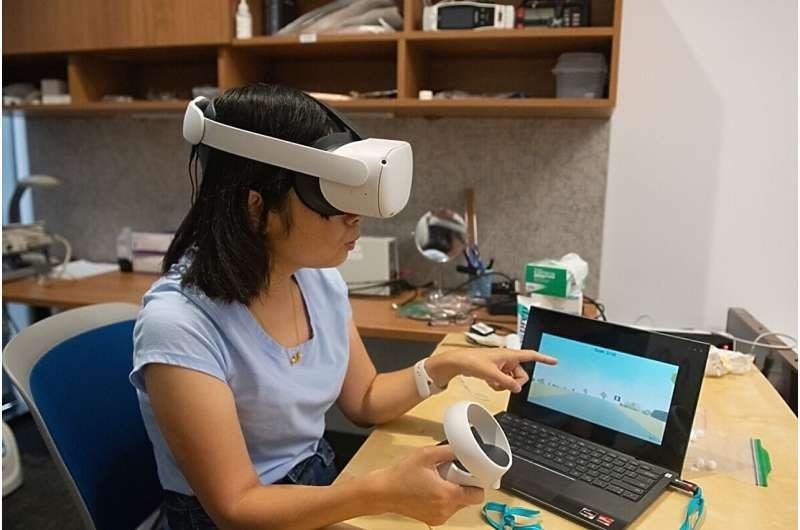Researchers use VR technology to measure brain activity, stress (Credit: University of Texas at Austin ) IANS

New York, August 7 (IANS) US researchers have modified a commercial virtual reality headset, giving it the ability to measure brain activity in order to examine how we react to hints, stressors and other outside forces.
The team at The University of Texas at Austin created a noninvasive electroencephalogram (EEG) sensor that they installed in a Meta VR headset that can be worn comfortably for long periods. The EEG measures the brain's electrical activity during the immersive VR interactions.
The device, detailed in the journal Soft Science, could be used in many ways, from helping people with anxiety, to measuring the attention or mental stress of aviators using a flight simulator, to giving a human the chance to see through the eyes of a robot.
"Virtual reality is so much more immersive than just doing something on a big screen," said lead researcher Nanshu Lu, Professor at the varsity’s Cockrell School of Engineering.
"It gives the user a more realistic experience, and our technology enables us to get better measurements of how the brain is reacting to that environment," Lu added.
The pairing of VR and EEG sensors has made its way into the commercial sphere already. However, the devices that exist today are costly, and the researchers said their electrodes are more comfortable for the user, extending the potential wearing time and opening up additional applications.
The best EEG devices today consist of a cap covered in electrodes, but that does not work well with the VR headset. And individual electrodes struggle to get a strong reading because our hair blocks them from connecting with the scalp.
The most popular electrodes are rigid and comb-shaped, inserting through the hairs to connect with the skin, an uncomfortable experience for the user.
"All of these mainstream options have significant flaws that we tried to overcome with our system," said Hongbian Li, a research associate in Lu's lab.
For this project, the researchers created a spongy electrode made of soft, conductive materials that overcome those issues.
The modified headset features electrodes across the top strap and forehead pad, a flexible circuit with conductive traces, and an EEG recording device attached to the back of the headset.
To validate the viability of the VR EEG headset, the researchers designed a driving simulation game. In the game, users must react to turn commands by pressing a button. The EEG measures the users’ brain activity, providing insight into their attentiveness during the driving simulation.






